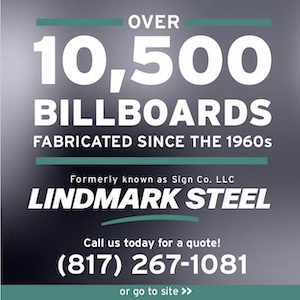
By Kevin Gephart
In my last column 5 more sales objections and how to handle them I asked readers to identify sales objections. Thanks for all the comments. I’ll address the objections which readers raised today.
People don’t want a drill, they want a hole; advertisers don’t want advertising, they want what advertising does. We are forced to deal with people who pull us into the minutia of media selection/negotiation and lose focus of the true objective. It’s critical to work with the highest levels of an organization to determine their advertising needs/goal. Too often, subordinates don’t know/understand the objective.
I don’t have a way to track response/success.
Short of having access to very sophisticated tools being developed by some of the major OOH companies, it is critical that advertisers make very specific offers/calls to action in their ads. Advertisers say they want to “get their name out there” = brand building (the legacy of billboard ads). You’ll only know if a brand building campaign has worked if you commission a consumer survey. The only way to get the cash register to ring is with a specific call to action.
The competition is cheaper.
Your reply: “You need to be suspect of anyone who tries to sell you something without fully understanding your needs/goals. I’m going to partner with you to meet your goals/objectives in a very cost-effective way”. It is always “no” for now…price advantages by the competition can change quickly.
The budget is already allocated, try again in six months.
Handle this pure stall tactic by agreeing to follow up in six months. You must continue to pursue them, acknowledge they are not ready, but say “I thought you’d want to see this.” (seed information about their business category/ marketplace/special offers you have) No advertiser is going to deny themselves a great opportunity just because their budget is set for six months.
Traffic is down:
“I understand how you feel a lot of other advertisers felt the same, however they have found (quote Department of Transportation, INRIX, etc data) the traffic levels in our market are actually very close to pre-pandemic months.” In most markets what has changed are the traffic patterns; more spread out during the day. “I work with many companies that want to “own” the recovery. Implementing a program now gives you the competitive advantage of the best program, at the best prices, and domination of the market as things recover”.
I just want interstate locations.
“We can work harder for you than that. While interstate locations are a powerhouse of what we offer, we can target your trade zone(s) more completely and deliver greater response. Use pricing strategy to mark up the interstate-only options and offer a deep discount for a more robust program.
Ugliness of the product when your posters fall and down sag, etc.
Poorly maintained billboards scream: “Don’t use this medium. We can’t guarantee how your message will look.” Work closely with management to develop your own strong response. Determine what you do to monitor/maintain your plant. Certify a response; if your office has, say 40 employees, you have 40 spotters that travel the market weekly and report issues. Use the service guarantee that I previously referenced. Agree in writing to address any issues in a specific time frame. Make assurances that you will personally do a market ride of their program at specific intervals to spot any problems related to their program.
Next week: Handling ad agencies
Kevin Gephart spent 35+ years selling advertising including 12 years at Clear Channel Outdoor in Minneapolis. He welcomes your sales questions or comments. Email kevinjgephart@gmail.com or use the form below.
[wpforms id=”49938″]
Paid Advertisement

















